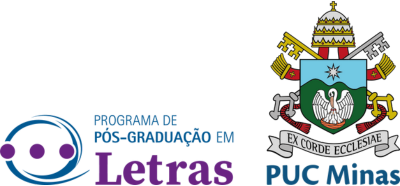Paradigm Structure in French Verbal Inflection
DOI:
https://doi.org/10.5752/P.2358-3428.2020v24n51p103-135Keywords:
French verbs., TAM, Global affixes, Floating consonants, Phonological constraints, CxMAbstract
Verb inflectional morphology in French exhibits a range of complexities both in the structure of verb stems (stem-final latent consonant; vowel variation; stem-final nasal vowel ; suppletive forms ; etc.) and the organization of the inflectional system, marked for five grammatical categories: tense, aspect, mode, person and number, which in the majority of cases cannot be identified as a morphological or phonological unit. The main objective of this paper is to show that these morphosyntactic properties should be analyzed as a global affix, which operate within the same space, with no fixed order. This strategy has the advantage to 1) take into account all the verb syntactic properties, 2) avoid multiple zero suffixes, 3) avoid the use of different analyses depending on the verb class, 4) avoid non-productive and phonologically unmotivated rules of insertion of theme vowels as in [dorm-i-r-ons] dormirons, and epenthetic consonants as in [ku-d-r-ons] coudrons, 5) account for French verb inflectional system in a simple and more explanatory way than strictly segmental analyses without "motivated" processes, using massive suppletion and/or stems dependencies, where inflected verbal forms are related by arbitrary implicational associations or quantitative measures based on extensive memorization. This analysis also has the property of explaining by means of a very general principle (the Onset principle) the realization of a stem-final FC in front of the affixes 'ions' and 'iez' as in before any suffix beginning with an empty onset. The verb inflectional paradigmatic structures is captured within Construction Morphology (CxM) as stated in Booij, 2010.
Downloads
References
Booij, G. and Audring, J. Construction Morphology and the Parallel Architecture of Grammar. Cognitive Science 41 (2017, Suppl. 2), p.277-302. 2015.
Booij, G. Construction Morphology. Oxford, UK: Oxford University Press. 2010.
Boyé, G. Régularités et classes flexionnelles dans la conjugaison du français. In Roché, Michel and Boyé, Gilles and Hathout, Nabil and Lignon, Stéphanie and Plénat, Marc (eds.), Des unités morphologiques au lexique, p.41-68, Hermes Science Publishing/Lavoisier, Langues et Syntaxe. 2011.
Coupe, A. R. Tense, But in the Mood: Diachronic Perspectives on the Representation of Time in AO. Language and Linguistics 14.6, p.1105-1138. 2013.
Estivalet, G.L. and Meunier, F. Stem Formation in French Verbs: Structure, Rules and Allomorphy. Languages 1, Usha Lakshmann. 2016.
Itô, J. Syllable Theory in Prosodic Phonology. Doctoral dissertation. Massachusetts University of Amherst. Published in 1988 by Garland, New York. 1986.
Jackendoff, R. Foundations of language. Oxford: Oxford University Press. 2002.
Kilani-Schoch, M. and Dressler, W.U. Morphologie Naturelle et Flexion du verbe Français. Gunter Narr Verlag, Tübingen. 2005.
Montermini, F. and Bonami, O. Stem spaces and predictability in verbal inflection. Lingue e linguaggio 12(2), p171-190. 2013.
Paradis, C. Ill- Formedness in The Dictionary: A Source of Constraint Violation. In C. Paradis & D. LaCharité (eds.). Constraint-Based Theories in Multilinear Phonology. Canadian Journal of Linguistics 38: 215-234. 1993.
Selkirk, E, O. The Phrase Phonology of English and French. Doctoral dissertation. MIT, Mass. Published in 1980 by Garland, New York. 1972.
Downloads
Published
How to Cite
Issue
Section
License
By submitting any manuscript (articles, reviews, or interviews) authors automatically assign full copyrights to PUC Minas. Authors are requested to ensure:
• The absence of conflicts of interest (relations between authors, companies/ institutions or individuals with an interest in the topic covered by the article), as well as funding agencies or sponsoring institutions of the research that culminated in the article.
This file is licensed under the Creative Commons Attribution - Share Alike 4.0 International.









